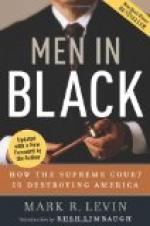On the other hand the clear, concise technical statement of a case is not a matter to be laughed at; no clear thinking is possible without it. No plain understanding of what the drama is about, nor what the issues of the battle are, can be grasped. Good lawyers are good thinkers and usually plain talkers. The present-day revolt against the confused pleadings may go to the opposite extreme and abolish them all, leaving the case to be presented as formless and loose. The vexed question of the proper form of a pleading may delay justice until it is determined on appeal from the City Court to the Supreme Court, then to the Appellate Division, then to the Court of Appeals. In the meanwhile the clients may die, the money in suit may be lost, while the audience is waiting merely for the programs to be printed.
In Perry on Common Law Pleading, reprinted in 1897, chapter thirteen is devoted to rules which tend to prevent obscurity and confusion in pleading.
Rule I. Pleadings must not
be insensible or repugnant.
Rule II. Pleadings must not be ambiguous
or doubtful.
Rule iii. Pleadings must not be
argumentative.
Rule IV. Pleadings must not be hypothetical
or in the alternative.
Rule V. Pleadings must not be by way of
recital, but must be
positive.
Rule VI. Things are to be pleaded according
to their legal effect.
Rule VII. Pleadings should observe the
known forms of expression as
contained in approved precedents.
Rule VIII. Pleadings should have their
proper formal commencements
and conclusions.
Rule IX. A pleading which is bad in
part is bad altogether.
These are pleasant rules for a layman to understand, and any time he has a day off or a holiday he should study them.
“Shocking,” cries the old-fashioned reactionary lawyer, “What! Do away with pleadings, you might as well do away with the whole case. Pleadings are like the rails for a train. No one on the train sees them, but take away the rails and the train would not go very far. Pleadings are the groundwork of the trial.”
He grows more and more indignant.
“The trouble with the modern courts is that they do not know what they are about. If this business of loosening the forms of pleadings had not taken place, lawyers would be better prepared when they came into court and there would not be this floundering about. The good old common law pleadings were the thing. It was a great mistake when they were abandoned. Then everyone knew where they were. If there was a mistake in the pleading then the whole case was thrown out of court. That was as it should be. Men had to be good and careful lawyers in those days. The slipshod methods of the present time are abominable.”
“You seem to be a little hard,” says the modern lawyer. “Justice ought not to depend on forms.”




